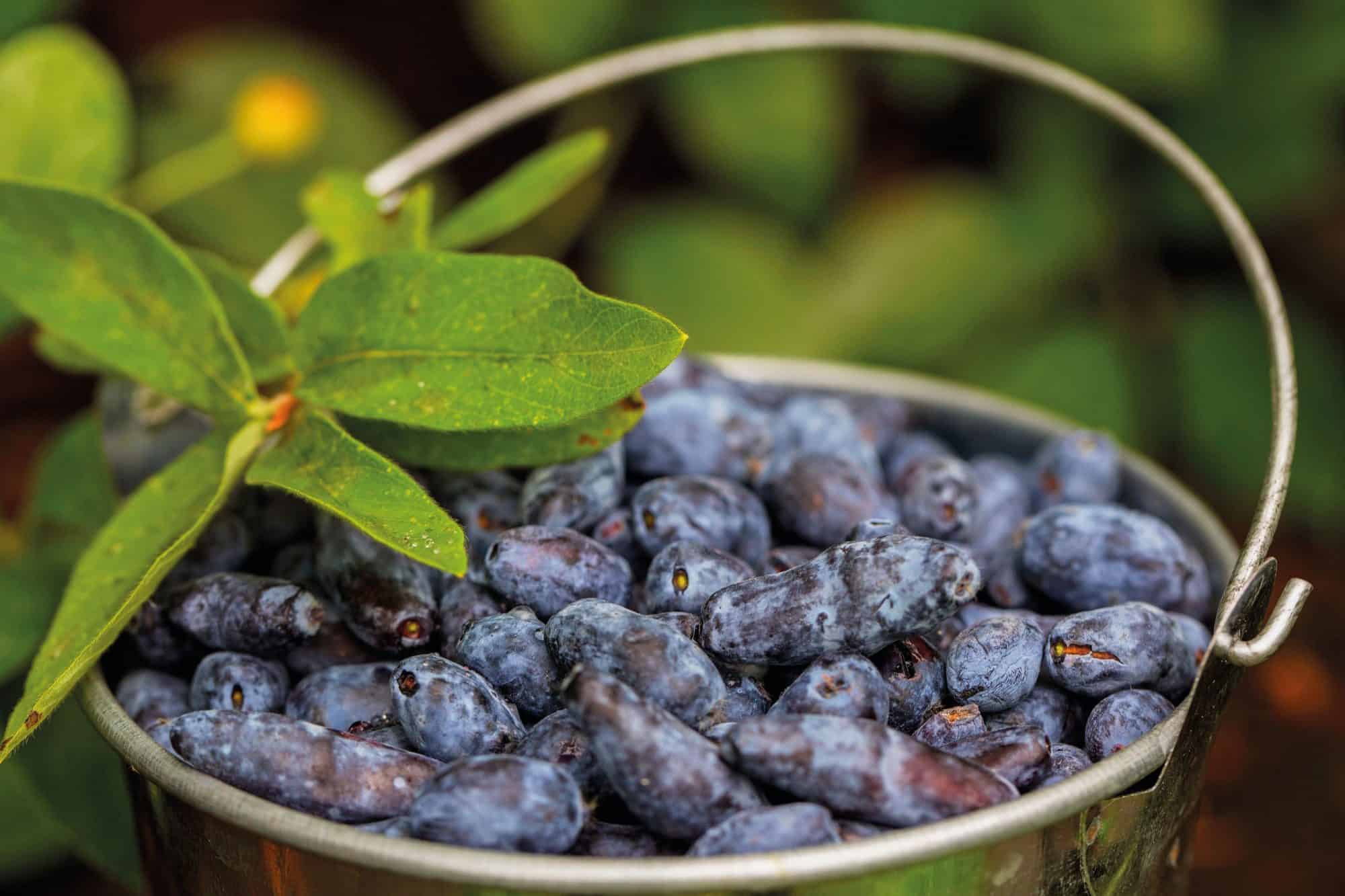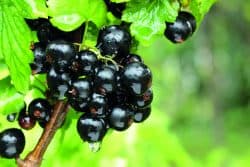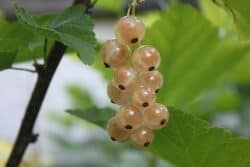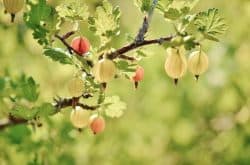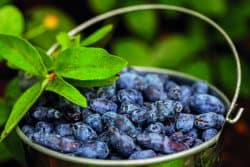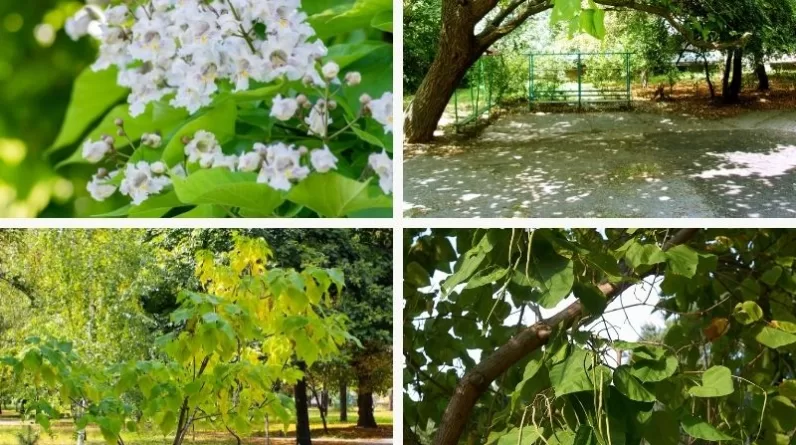Growing berries is becoming more and more popular and it’s all the more interesting when you know that you can grow them in pots. On the other hand, the choice of varieties is impressive and it becomes difficult to choose. That’s why we thought we’d make your life easier with a short list of the best varieties of small fruits to grow in pots.
Strawberry plants in pots
Growing strawberries in pots is easy and pleasant, especially when you use soil specially designed for this type of cultivation, such as soil for small fruits & acidophilic plants from Fafard. The strawberry is certainly a safe bet that will look great in a pot on the patio or a hanging basket pulled from the pergola. You’ll love these small fruits that are rich in antioxidants and contain more vitamin C than an orange.
« Delight »
- Compact variety
- Abundant harvest all summer
- Easy to grow
« Tuscany »
- Rather conical-shaped fruit
- Very sweet taste
- Pink-red flowers (most strawberry flowers are white)
Potted raspberry bushes
Just like strawberries, raspberries are easy to grow in pots. In addition, this small, delicate red fruit contains vitamin E and several minerals, including potassium. Raspberry can be used in coulis, syrup, jellies jams, or sorbet. It also freezes well to add to baked goods all year round.
« Shortcake »
- Rather compact (no staking)
- Self-fertile (one plant is enough)
- Without thorn
- Sweet and juicy fruits with a light vanilla taste
Blackberry bushes in pots
A little cousin of the raspberry, the blackberry is a small fruit that is most often black, but the color can also be red or white. We distinguish the raspberry from the blackberry by the latter which retains its receptacle (extension of the peduncle) when picked, while that of the raspberry remains attached to the plant leaving the center of the fruit hollow. Full of antioxidants, blackberries contain many minerals and trace elements (potassium, iron, magnesium, manganese, etc.).
« Baby Cake »
- Dwarf and thornless variety
- Possibility of producing a second time on new branches
- Abundant harvest in mid-July
Blueberry bushes in a pot
Who doesn’t love blueberries? This delicious little fruit is increasingly considered a “superfood” because it is full of antioxidants and vitamins. It is also renowned for its many health benefits. Its taste varies from very sweet to very acidic, depending on the degree of ripening and the variety of the fruit. Although most plants are self-fertile, we still suggest using different varieties and planting your potted blueberries in groups of 3. They will produce larger fruits and in greater quantities.
« Jelly Bean »
- Compact variety (between 30 to 60 cm in size)
- Small hanging white flowers in late spring
- The foliage changes from dark green (in summer) to bright red (in fall)
« Peach Sorbet » et « Pink Icing »
- Compact and productive plants
- Very decorative foliage (going from peachy pink, to orange, then to emerald green)
- Large sweet fruits with a slight peach taste (peach sorbet)
Cassis in a jar
Blackcurrant is a small, little-known fruit that takes the shape of a small black ball and is full of fiber, minerals, and vitamins. For the same quantity, it contains more antioxidants than blueberries. Also called “Black Fruit Gadellier”, you will appreciate the blackcurrant for its sour taste mainly in jam or even dried. You can even make a syrup to enhance your cocktails. Not all varieties are self-fertile, so it is best to plant two varieties to increase fruit production. The blackcurrant prefers coolness to extreme heat, so this shrub is perfect if you have a partially shaded terrace.
« Ben Lomond »
- Compact and productive plants
- Large fruits with a strong taste
- Flowers late
« Consort »
- Black and fragrant fruit
- The sweet, unique, and musky taste
- Vigorous and cold-resistant variety
Potted currants and currants
Some call them “gazelles” and others “currants”. However, there is a difference between the two. In both cases, these small fruits rich in potassium, vitamin C and calcium awaken the taste buds and even childhood memories.
In the case of the currant bush (gazelle), the small red or white fruits are softer, sweeter, and less tart. They grow in clusters and the plants do not have thorns. Fruiting occurs in mid-season. Although it is self-fertile, cross-pollination is not necessary for the gooseberry. You will get a better yield if you plant two plants.
- Gadelier “Red Lake” – best-selling variety in garden centers
- Red and large fruits
- Vigorous and productive
- Yellow foliage in fall
Gadelier « White Pearl »
- Pinkish white fruits
- Purple pink flowers
- Tart, but sweeter than reds
While gooseberries ( currant ), are mostly thorny shrubs where the fruits are delicious to bite into and not gathered in a cluster. They are both whitish and translucent or even red, yellow or green.
“Pixwell” – Very popular variety
- Small pale green fruits turning pink-red when ripe
- Excellent production
- Almost thornless
« Hinnonmaki Rouge »
- Productive and vigorous plants
- Large translucent red fruit
- Uniquely Flavored Fruit: Sweet on the inside, but tart on the outside
Waiters in pot
Rich in antioxidants, haskap contains more vitamins C and A than most berries. This small elongated fruit has a color similar to that of the cornflower. Its taste is a perfect blend of blueberry and raspberry, with a little touch of rhubarb. We love it fresh, in juice, or our favorite pastries. The small, undemanding shrub can be grown in a pot, but be aware that it will reach around 1.5 to 2 m in height and 1 m in diameter. As haskap is not self-fertile, you will need to grow 2 different varieties to encourage fruiting.
« Berryblue »
- Excellent pollinisateur
- Very vigorous and very productive
- Picked too early, the fruits are somewhat bitter; Picked when ripe (late July-early August), the fruits have a sweet and tangy taste.
« Borealis »
- Sweet and tangy fruit, the best-tasting
- Larger fruit than other haskap varieties
- Early harvest: before or at the same time as the strawberries

